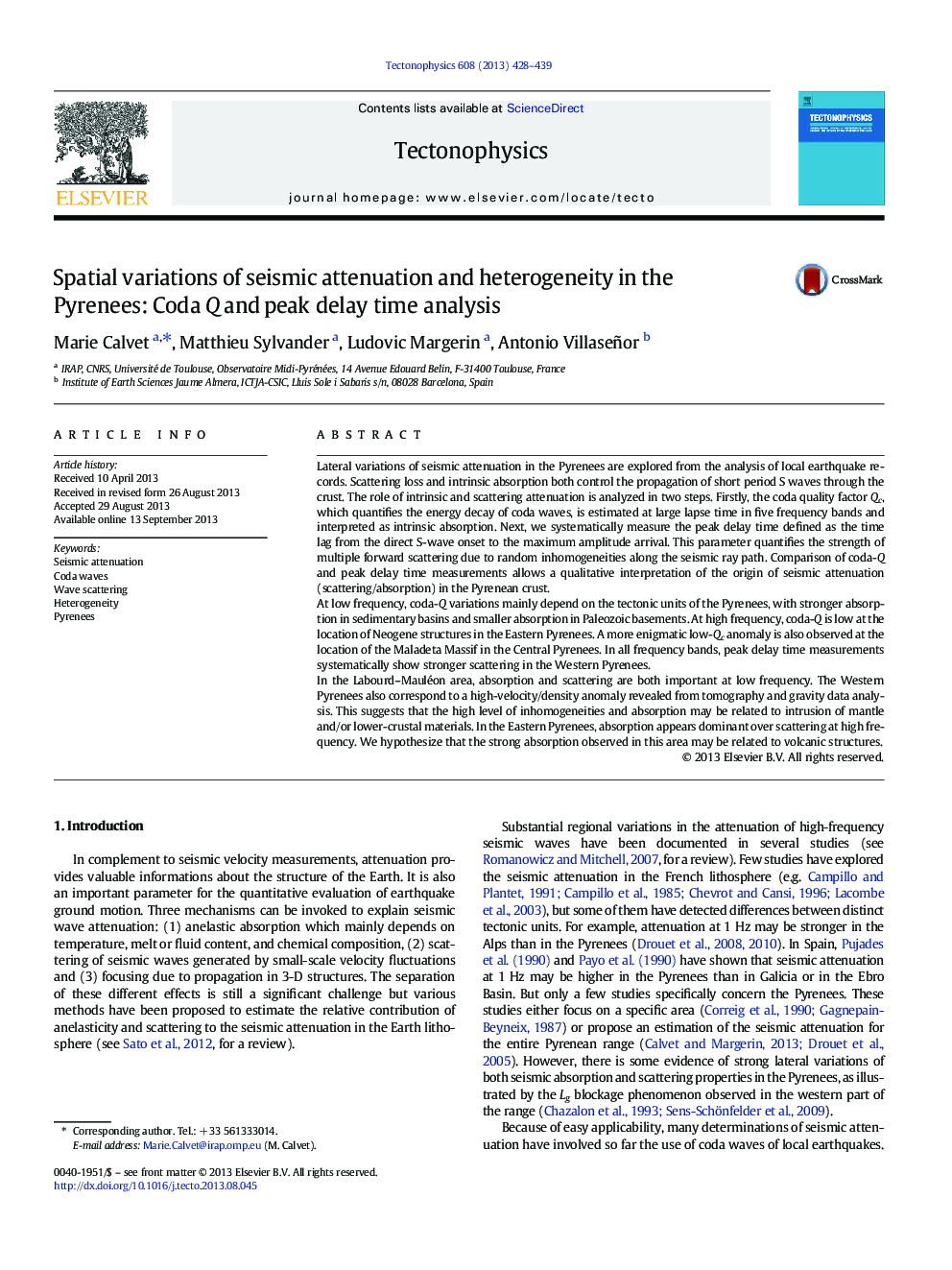| کد مقاله | کد نشریه | سال انتشار | مقاله انگلیسی | نسخه تمام متن |
|---|---|---|---|---|
| 6433962 | 1636779 | 2013 | 12 صفحه PDF | دانلود رایگان |

- Coda-Q and peak delay time of S waves are measured in several frequency bands.
- We observe strong lateral variations of seismic attenuation along the Pyrenean range.
- The origin of the seismic attenuation in the Pyrenean crust is discussed.
- Absorption and scattering are strong at low frequency in the Western Pyrenees.
- Absorption is dominant over scattering at high frequency in the Eastern Pyrenees.
Lateral variations of seismic attenuation in the Pyrenees are explored from the analysis of local earthquake records. Scattering loss and intrinsic absorption both control the propagation of short period S waves through the crust. The role of intrinsic and scattering attenuation is analyzed in two steps. Firstly, the coda quality factor Qc, which quantifies the energy decay of coda waves, is estimated at large lapse time in five frequency bands and interpreted as intrinsic absorption. Next, we systematically measure the peak delay time defined as the time lag from the direct S-wave onset to the maximum amplitude arrival. This parameter quantifies the strength of multiple forward scattering due to random inhomogeneities along the seismic ray path. Comparison of coda-Q and peak delay time measurements allows a qualitative interpretation of the origin of seismic attenuation (scattering/absorption) in the Pyrenean crust.At low frequency, coda-Q variations mainly depend on the tectonic units of the Pyrenees, with stronger absorption in sedimentary basins and smaller absorption in Paleozoic basements. At high frequency, coda-Q is low at the location of Neogene structures in the Eastern Pyrenees. A more enigmatic low-Qc anomaly is also observed at the location of the Maladeta Massif in the Central Pyrenees. In all frequency bands, peak delay time measurements systematically show stronger scattering in the Western Pyrenees.In the Labourd-Mauléon area, absorption and scattering are both important at low frequency. The Western Pyrenees also correspond to a high-velocity/density anomaly revealed from tomography and gravity data analysis. This suggests that the high level of inhomogeneities and absorption may be related to intrusion of mantle and/or lower-crustal materials. In the Eastern Pyrenees, absorption appears dominant over scattering at high frequency. We hypothesize that the strong absorption observed in this area may be related to volcanic structures.
Journal: Tectonophysics - Volume 608, 26 November 2013, Pages 428-439